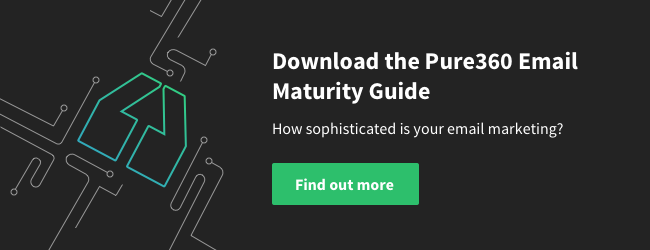Eye tracking software and heat maps have the ability to take a lot of guesswork out of conversion rate optimisation to help you understand how your viewers read your emails. Whilst eye-tracking in the context of email marketing is still a relatively new concept, consideration of eye-tracking with regards to your layout and content can improve the effectiveness of your campaigns.
So let’s look at the common browsing patterns and key aspects of human behaviour that are relevant to marketers today.
Short and Sweet
According to this study conducted by the Nielsen Group, readers scan emails very quickly and the only areas they give any appreciable amount of time are the initial copy and headlines. Longer paragraphs can have a negative influence on the number of CTA clicks. The average time allocated to a newsletter after opening it was only 51 seconds, so you need to make your point quickly!
If A/B testing of your campaign shows that your CTR leaves a lot to be desired, try tweaking and minimising your initial copy and headline to see if your poor CTR is due to an eye-tracking issue.
The F-Bomb
We also know that web users tend to browse sites and read pages in the same way they would a book or an article. For English speaking people (and languages with similar reading patterns), the left side of the screen is heavily favoured and all sites tend to be browsed in an F-pattern– two horizontal movements, followed by a vertical.
If you want viewers to focus on key selling elements, shorten your introductory paragraph to the absolute minimum and ensure that the top two paragraphs contain your most important information. Don’t neglect the vertical movement, as your heads of paragraphs or bullet points should contain information-carrying words or images to help draw the readers’ eye to relevant information.
Changing Face
Using visual cues to guide visitors to key areas of your email is nothing new, but just how effective is it?
Human beings have a natural tendency to follow the gaze of others, and we have been coached since birth to follow any arrows that direct us to where we should be looking or going. In a study from Moz, researchers found that if they used images where the models faced the text, the readers followed the model’s line of sight to the headline and opening copy. Not only that, but the facial expressions of a model and the direction of a model’s gaze could also direct a viewer’s eye to different elements of the page.
Consider what images you’re utilising in your emails- could these be tweaked to help guide the eye to the information you most want to be seen?
Step out of the fold
Relying on the screen above “the fold” to do all of the heavy lifting is one of the biggest usability mistakes you can make, as the folks at ContentVerve showed that moving the call-to-action far below the fold actually boosted their conversions by 304%!
Don’t be afraid of placing important elements below the fold (and testing them there), because it gives people time to read your copy before they take action. Our advice would be to position your CTA in a place that best compliments the decision-making process of your readers. If they need time to review the information presented to them, below the fold might be best. If you’re directing readers to a simple offer and there is little thought required on their part to make a decision, above the fold will do just fine. Again, make sure you A/B test this to find out what works best for you.
Final Thoughts
Eye-tracking and heat map technology can be an expensive investment, so instead use common sense and consider the user experience yourself when planning your next campaign.
If your campaign is cluttered, with too much information, multiple text formats and fonts with confused imagery, it can distract your reader and detract from their reading experience. This leads to a poor CTR and ROI for you. Don’t distract your reader with cluttered graphics and text, and at the very least ensure that your images and information is positioned in a way that mimics how one would naturally read a book or article. This way you’ll know that you’ve got the basic eye-tracking components right and your A/B testing will confirm this for you.

